Bob Avakian has written that one of three things that has “to happen in order for there to be real and lasting change for the better: People have to fully confront the actual history of this country and its role in the world up to today, and the terrible consequences of this.” (See “3 Things that have to happen in order for there to be real and lasting change for the better.”)
In that light, and in that spirit, “American Crime” is a regular feature of revcom.us. Each installment focuses on one of the 100 worst crimes committed by the U.S. rulers—out of countless bloody crimes they have carried out against people around the world, from the founding of the U.S. to the present day.
See all the articles in this series.
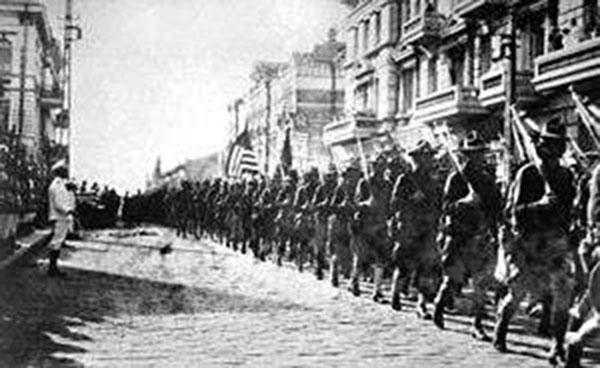

The U.S., Britain, France, and other countries joined Russian counter-revolutionaries in a battle to overthrow the new revolution. This was the Civil War of 1918-1921, pitting the “White” armies and their imperialist backers against the revolution’s fledgling Red Army. The U.S. sent a “White” army of 13,000 to Siberia: 5,000 to Arkhangelsk and 8,000 to the port city of Vladivostok (shown here).
THE CRIME:
One hundred years ago, in October 1917, the Russian people, led by V.I. Lenin and the Communist (or Bolshevik) Party, rose up in revolution and overthrew the country’s old, oppressive system rooted in capitalism and feudalism.1 It was an earth-shaking, earth-changing event. It was the first attempt in modern history to build a society free from exploitation and oppression, aiming for a communist world. This socialist revolution electrified people the world over, and served as an inspiration and model of what they, too, could achieve.
But the U.S. and oppressors in Russia and the world over saw this liberating revolution as a nightmare and a threat, and they immediately moved to crush it. Over the next several years their assaults took the lives of millions in the new society.
The new revolutionary state (later named the Union of Soviet Socialist Republics or Soviet Union) had immediately begun implementing its promise of “peace, bread and land.” The old Russian regime had joined the imperialist bloodfest of World War 1 (1914-1918) as one of three major "Allies" (with Britain and France; the U.S. joined the war on the same side in three years later) against Germany and its partners. But the new revolutionary state quickly pulled Russia out of the war, took measures to solve the country’s food crisis, and started distributing land to the peasants. The revolution quickly enacted measures for women’s equality, including the right to abortion and divorce. It upheld the right of self-determination for the oppressed nations within old Russia’s Tsarist empire, and outlawed anti-Semitism. In December 1917 it repealed all laws against homosexuality.
For the U.S. and its British and French allies in particular, this communist revolution represented a grave challenge to their system overall, and the Bolshevik withdrawal from World War 1 was an immediate threat to their plans to defeat Germany and divide the spoils of war.
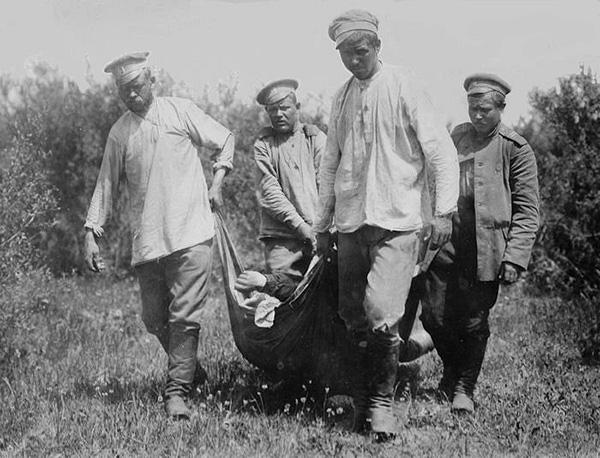

After the October Revolution in 1917, the new Communist Party quickly pulled Russia out of World War 1. The war had already inflicted a staggering toll on the Russian people—nearly 1.5 million dead, three million wounded, and widespread famine.
So the U.S., Britain, France, and other imperialist powers quickly moved to defeat the revolution and restore their former allies to power. The war had already inflicted a staggering toll on the Russian people—nearly 1.5 million dead, three million wounded, and widespread famine. Now the imperialists wanted to snuff out their hopes for a new society and drag them back into the reactionary slaughter.
In 1918, the British-French-American alliance took steps to isolate revolutionary Russia politically and economically, imposing a punishing economic blockade: for two years no food, medicine, fuel, or other goods could enter the country. This included the world’s first oil embargo.
Then the U.S., Britain, France, and nearly a dozen other countries joined forces with Russian counter-revolutionaries in an all-out battle to overthrow the new revolution and re-establish the old, oppressive order. This was the Civil War of 1918-1921, pitting the “White” armies and their imperialist backers against the revolution’s fledgling Red Army, made up mainly of workers and peasants. The Whites were a reactionary collection of anti-communists and opponents of the revolution—Tsarist military officers, ultra-nationalist Russian chauvinists and anti-Semites, monarchists, religious fanatics, and various reformist democrats. Most saw themselves, as one White general put it, as “fighting for Western civilization and culture”—white European supremacy, patriarchy, religious obscurantism, and brutal colonialism.
The Western imperialists backed the White armies with troops, military advisers, weapons, munitions, money, and political support.
The U.S. sent 13,000 troops, far more than any other world power, to Siberia. Nearly 5,000 landed in the city of Arkhangelsk and fought the Red Army from September 1918 through July 1919, inflicting casualties and destruction. Another 8,000 U.S. troops moved into the port city of Vladivostok, the staging point for a multinational fighting force including Japan and China.
Meanwhile, French forces took control of the key Black Sea port of Odessa in Ukraine, which at that time was part of Russia. The British backed the butcher General Denikin with arms, munitions, and troops as he advanced toward Russia’s capital Moscow.
White armies attacked the revolution from the south, north, northwest, and east. Their campaign came to be known as the “White terror.” In the Civil War’s first days, the Bolsheviks controlled at most one-third of Russia’s vast territory.
In southern Russia, General Lavr Kornilov commanded his troops, “The greater the terror, the greater our victories,” ordering them to take no prisoners and vowing “to set fire to half the country and shed the blood of three-fourths of all Russians.” A general under Kornilov’s command called on people to arm themselves to destroy “the evil force which lives in the hearts of Jew-communists.” In one small town alone, Whites murdered more than 1,500 Jews, mostly the elderly, women, and children. Some 100,000 to 150,000 Jews in Ukraine and southern Russia were killed in pogroms (lynch-mob-like attacks), and hundreds of thousands more were left homeless, with tens of thousands falling victim to serious illnesses.
In the Don region, the regional Soviet government was defeated in 1918 and replaced by a White Cossack regime, which proceeded to shoot or hang 45,000 people, and in that same year mass executions occurred in other southern Russian territories under White occupation.
In the Urals, Siberia, and the Far East, Cossack warlords practiced great cruelty. In September 1918, during the suppression of a peasant uprising in Slavgorod, the Cossacks killed up to 500 people. The village of Black Dole was burned down and the peasants were shot, tortured, and hanged from pillars, including women and children. Girls and women of Slavgorod and surrounding areas were raped and then shot. Some victims under Cossack rule had their eyes gouged and tongues and strips of flesh from their backs cut off, others were buried alive, or tied to running horses. In these regions the White terror took an estimated 300,000 lives.
In the Siberian city of Omsk in the east, an eyewitness reported, “At a time when the wives of dead comrades, day and night looked in the snow for bodies, I was unaware of the horror behind the walls of the guardhouse. At least 2,500 people were killed. Entire carts of bodies were carried to a city, like winter lamb and pork carcasses. Those who suffered were mainly soldiers… and workers.”
After three years of fierce fighting, the revolutionary people and their Red Army were able to defeat the Whites, and the foreign powers, including the U.S., were forced to leave.
The cost was horrendous. The blockade and then the Civil War had forced people to leave the cities to forage for food and fuel. In the bitter winter of 1919, people who’d frozen to death lay in streets, homes, and hospitals. Diseases ran rampant, with millions dying of typhus in 1920 alone. Millions more died of starvation. By 1922 there were more than seven million hungry children roaming the streets. The economy was devastated: factories and bridges had been destroyed, mines flooded, machines damaged, industrial and agricultural production vastly reduced. All told some five to seven million died of starvation and disease during and immediately after the Civil War.
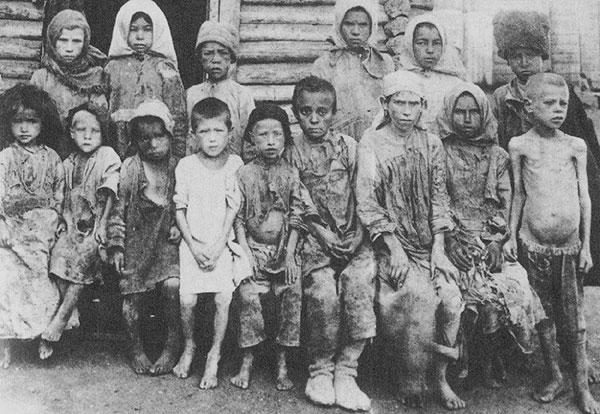

In Russia, war and economic blockades led to great famine. By 1922 there were more than seven million hungry children roaming the streets. And all told five to seven million people died of starvation and disease during and immediately after the Civil War.
These horrors were supported, enabled, deepened, or carried out by the invading imperialist powers, including the “freedom loving” United States.
THE CRIMINALS
President Woodrow Wilson: Famous for issuing declarations upholding the right of nations to self-determination, Wilson granted the Russian people no such right to determine their future. He sent 13,000 troops, far more than any other world power, to intervene in the Civil War in the attempt to defeat the Red Army, destroy the fragile socialist revolution, and drag Russia back into World War 1. Wilson may also have sought to recover U.S. military equipment and advance other U.S. interests in Europe and the Asia-Pacific, but clearly, he wanted the revolution stopped dead in its tracks.
Winston Churchill: Churchill was perhaps without peer among major Western imperialist leaders in his desire to see the Soviet revolution defeated. As the Secretary of State for War and Air in Britain, then the world’s leading imperialist power, Churchill considered the revolution an abomination and called on the invading allies to “strangle the Bolshevik baby in its cradle.”
The governments of the other invading nations: Canada, Australia, India, South Africa, France, Japan, China, Greece, Estonia, Serbia, Italy, Poland, and Rumania
General Lavr Kornilov: As leader of the White forces in southern Russia, Kornilov made good on his statement, “The greater the terror, the greater our victories.” In the Don region village of Lezhanka, for example, Kornilov’s officers kill more than 500 people. In April 1918, a Soviet artillery shell killed Kornilov, who was replaced by General Anton Denikin, who took the White terror to an even higher level. In the territories they occupied, Denikin’s forces engaged in mass executions and plunder. In one town, in September 1918, 4,000 people were massacred, and the press during the Denikin regime in the Don region constantly incited violence against communist Jews and Jews believed to be communists. During the Civil War, an estimated 50,000 Jews were murdered by Denikin’s Whites and other anti-Soviet forces. Meanwhile, in eastern Russia, Admiral Alexander Kolchak ordered his troops to raze whole villages to the ground. In some Siberian provinces, 20,000 farms were destroyed and more than 10,000 peasant houses were burned down.
THE ALIBI: The U.S. and other capitalist-imperialist nations framed their hostility toward and efforts to crush the Russian revolution in its infancy by intervening in the Civil War as a monumental battle between good—Western democracy, freedom, and individual rights—and evil—a monstrous, godless socialism and communism that was destroying the lives of its citizens and was threatening to do the same worldwide.
THE ACTUAL MOTIVE:
The attitude of the U.S. and the other imperialist powers was not, “millions of Russians have rejected their old government and established a new system. It’s their country, let’s give them a chance to see how it works out.” No—the imperialists saw the Bolshevik revolution as a fundamental threat and challenge to their entire system—economically, politically, and ideologically—a whole new and radically liberating model of how society can and should be organized.
As Raymond Lotta states,
We’re talking about a sea change in human history, the first attempts in modern history to build societies free from exploitation and oppression…. These were titanic risings of the modern-day “slaves” against their “masters.” They aimed to bring about a community of humanity,… one where there are no more divisions among people in which some rule over and oppress others, robbing them not only of the means to a decent life but also of knowledge and a means for really understanding, and acting to change, the world. Never have there been such radical and far-reaching transformations in how society is organized, in how economies are run, in culture and education, in how people relate to each other, and in how people think and feel…”
The Russian revolution and the development of Soviet society also represented an immediate threat to the strategic interests of the U.S. and other capitalist-imperialists, especially their control of the colonial regions of Africa, Asia, and the Middle East, where the revolution strongly reverberated among the oppressed. In some of those countries and elsewhere, for example, communist parties were formed in the wake of the Bolshevik revolution.
The capitalist-imperialist powers, with the U.S. increasingly in the forefront, remained hostile to the Soviet Union for the three-plus decades it remained a real socialist state, including through economic, political, and military threats and isolation, and the enormous horrors inflicted on the Soviet Union during World War 2.
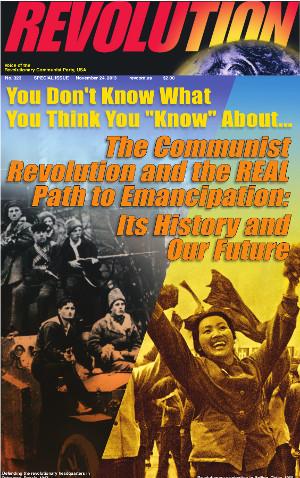

Special Edition of Revolution:
You Don't Know What You Think You "Know" About...
The Communist Revolution and the REAL Path to Emancipation: Its History and Our Future
Read it online at revcom.us
SOURCES
Raymond Lotta, “You Don’t Know What You Think You ‘Know’ About… The Communist Revolution and the REAL Path to Emancipation: Its History and Our Future,” Revolution newspaper, special edition, November 24, 2013
Sheila Fitzpatrick, The Russian Revolution 1917-1932, Opus Books, 1983
David S. Folglesong, America’s Secret War Against Bolshevism: U.S. Intervention in the Russian Civil War, 1917-1920, University of North Carolina Press, 1995
Peter Kenez, Civil War in South Russia, 1918: The First Year of the Volunteer Army, University of California Press, 1971
Dimitri Von Mohrenschildt, ed., The Russian Revolution of 1917: Contemporary Accounts, Oxford University Press, 1971
“U.S. and Allied War in Russia, 1918-22, Critical Enquiry,” criticalenquiry.org
“Allied Intervention in Russia,” The National Archives (UK)
“Allied Intervention in the Russian Civil War,” Wikipedia.org
“The White Terror (Russia),” Wikipedia.org
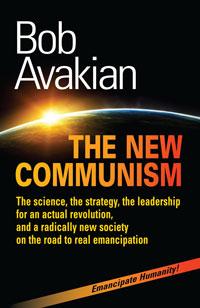

from the Publisher
... This book is a masterwork and a master class—it is a living laboratory of the new synthesis of communism developed by Bob Avakian. It is also striking in its ability to combine high level revolutionary communist theory and modeling of revolutionary leadership with a visceral, colloquial and passionate style that will resonate with and be accessible to a wide variety of readers.
This thought-provoking book is sure to challenge stereotypes and conventional thinking.
See excerpts HERE
About the book, Order HERE
